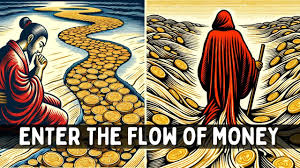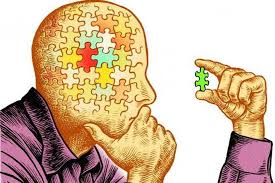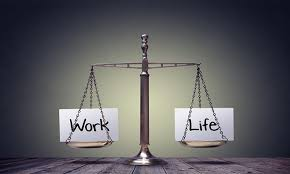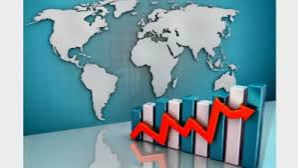
Money isn’t just paper, numbers on a screen, or a means to pay bills. It’s energy. It moves, flows, expands, and contracts, just like any other force in nature. In fact, the very word currency comes from the Latin currere, meaning “to run” or “to flow.” When we recognize money as a dynamic force rather than a fixed resource, we can transform how we earn, spend, and invest—not just for financial success, but for a life of greater purpose and fulfillment.
Money as Energy: A New Perspective
Think of money as water in a river. When it flows smoothly, it nourishes everything in its path, supporting life and growth. But when it stagnates, it becomes murky and unusable. If it rushes too fast, it erodes everything around it. Money works the same way.
Many of us were raised with conflicting messages about money—either to fear scarcity or to chase more without clear purpose. But when we see money as a form of energy, it becomes something to be managed with intention, rather than something that controls us.
Like all forms of energy, money follows certain principles:
- It is a medium of exchange – Money has no intrinsic value; it only gains power through how we use it.
- It reflects our intentions – Where our money goes shows what we truly value.
- It must be directed wisely – Just as energy can be wasted, stored, or used productively, money needs mindful management.
- It responds to flow – Money is meant to move, not stagnate. The healthiest financial habits involve both giving and receiving.
Directing the Flow: How to Use Money Consciously
1. Clear the Blocks: Let Go of Scarcity Thinking
Many people experience emotional friction around money—whether it’s fear of not having enough, guilt over spending, or stress over making financial decisions. This mental clutter acts like a dam, restricting the natural flow of wealth.
Start by identifying limiting beliefs: Do you see money as something you must hoard? Do you feel undeserving of financial success? Awareness is the first step toward shifting these patterns. Money is simply a tool, neither good nor bad—it’s how we direct it that matters.
2. Align Money with Your Values
Because money is energy, where it flows reveals what we prioritize. Do your spending habits reflect what truly matters to you? If financial choices are made unconsciously, money often leaks into things that don’t bring long-term satisfaction.
A practical exercise: Look at your last month’s spending. Does it align with your highest goals and values? If not, adjust the flow—channel more of your money into experiences, investments, or causes that enrich your life.
3. Cultivate Balanced Circulation
Financial health isn’t just about accumulating wealth; it’s about how effectively money moves through your life. There are four key areas of flow:
- Earning – Money coming in should be a reflection of your skills, effort, and contribution to the world.
- Saving & Investing – This is like building reservoirs to sustain future growth.
- Spending – Every dollar spent is a transfer of energy. Spend with awareness and purpose.
- Giving – Just as nature thrives on cycles of giving and receiving, generosity keeps money energy vibrant.
Rather than seeing money as something to cling to or let slip away, aim for a rhythm that supports both security and expansion.
4. Remove the Resistance: Stop Fighting Your Money Flow
Have you ever noticed that when you stress about money, it seems harder to manage? Fear creates resistance, making it difficult to make sound financial decisions. When we trust that money flows and that we are active participants in its movement, we shift from a place of anxiety to empowerment.
Instead of fixating on lack or struggle, ask:
- How can I create more value in the world?
- How can I make financial decisions that bring ease and clarity?
- Where can I redirect money flow for greater impact?
These shifts in mindset can transform financial challenges into opportunities.
5. Trust the Flow and Expand Prosperity
Just as a river nourishes everything it touches, money, when directed wisely, supports growth—not just for yourself, but for your community and the world. Wealth isn’t just measured in numbers; it’s measured in the opportunities, freedom, and well-being it creates.
The healthiest financial mindset is one of trust: trust in your ability to generate income, trust in your capacity to make wise choices, and trust in the natural circulation of wealth. When money flows in alignment with your values and purpose, prosperity follows—not just in bank accounts, but in every aspect of life.
Final Thought: Money as a Force for Good
By understanding money as energy, we move beyond financial stress and step into financial empowerment. It’s no longer just about accumulating wealth—it’s about mastering the flow. When money moves in alignment with our values, it becomes a powerful tool for creating a meaningful and abundant life.
The question is: Are you directing your money’s energy, or is it directing you?
Helping Executive Women Reduce Stress, Prevent Fatigue & Avoid Burnout
📩 Follow me for more insights or send me a message to connect!









